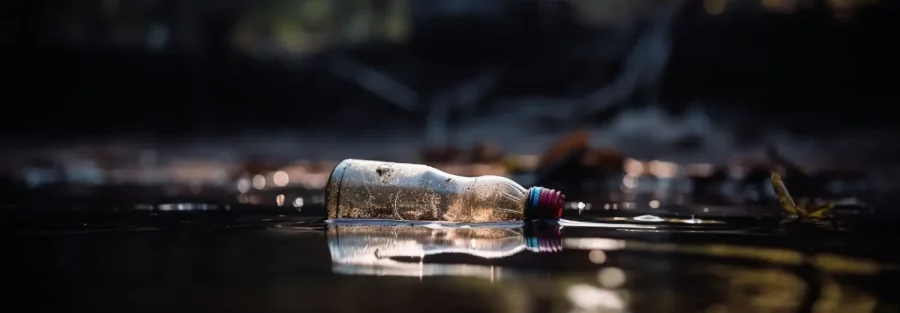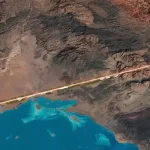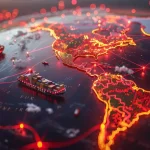“We are not apart from nature – we are embedded in it. When nature breaks down, so do we.”
In Brief
- Unprecedented climate extremes are devastating ecosystems worldwide.
- Heatwaves, floods, and wildfires are killing wildlife and collapsing food chains.
- The root cause is human-driven – but so are the solutions.
- Restoring nature means securing humanity’s future. The time to act is now.
Introduction: The Age of Extremes
The climate is not just changing – it’s becoming more violent, less predictable, and deeply interconnected with human survival. Record-breaking heat, megafires, rising seas, and flash floods are no longer rare events. Nature is sending increasingly urgent signals, and we’re running out of time to respond.
But while the crisis is global, the impact is painfully local: collapsing ecosystems, vanishing species, disrupted food chains, and rising climate migration. We are now in the age of extremes – and how we respond will define this generation.
- Climate Extremes, Defined and Escalating
Climate extremes refer to unusually severe weather events – such as record heat, multi-year droughts, powerful cyclones, and flash floods. What was once considered “once-in-a-century” is now happening every few years, and with greater intensity.
According to the IPCC’s 2023 report, global temperatures are now 1.2°C above pre-industrial levels, inching dangerously close to the 1.5°C threshold that scientists warn will unleash irreversible damage.
Fossil fuel emissions remain the primary culprit – releasing greenhouse gases that trap heat, shift atmospheric patterns, and fuel supercharged weather events. These extremes are no longer isolated – they’re triggering chain reactions across ecosystems, borders, and economies.
- Nature’s Fragile Web Is Unraveling
Extreme weather isn’t just disruptive – it’s destructive to life at every level.
Wetlands dry up, killing amphibians and birds.
Oceans warm, bleaching coral reefs and starving marine life.
Forests burn or die slowly under heat stress, displacing pollinators, birds, and mammals.
A single disrupted species – like bees or plankton – can collapse entire food webs. And when ecosystems fail, they lose their capacity to regenerate, store carbon, purify water, or stabilize soil – functions that directly support human life.
“In destroying nature, we are dismantling the very systems that keep us alive.”
- The Human Fingerprint
Industrialization, deforestation, over fishing, and over consumption have dramatically altered Earth’s systems. Cities are expanding into wetlands, forests are cleared for farmland, and oceans are turning acidic from CO₂ absorption.
Despite knowing the risks, global carbon emissions hit a new high in 2023, with energy-related CO₂ surpassing 36.8 billion tonnes. A world driven by short-term gains is consuming resources at 1.7x the Earth’s capacity to regenerate – a model that’s not just unsustainable, but existentially dangerous.
- The Human Cost of Nature’s Breakdown
Nature’s crisis is a human crisis:
Agriculture: Droughts and erratic rainfall are slashing crop yields, raising food insecurity.
Water: Clean water is becoming scarcer as rivers dry up and floods contaminate supplies.
Communities: Rising seas and stronger storms are displacing millions – creating climate refugees.
Health: Heatwaves and air pollution are worsening respiratory and cardiovascular disease, particularly in cities.
Economics: The global cost of climate disasters in 2024 exceeded $380 billion, with the poorest nations hit hardest.
- What We Can Still Do
The window for action is closing – but not closed.
Bold climate action can still mitigate the worst outcomes and begin healing ecosystems. What’s needed?
Accelerate clean energy: Transition from fossil fuels to solar, wind, and hydro.
Protect & restore ecosystems: Re-wilding, reforestation, and marine conservation boost biodiversity and capture carbon.
Build climate-resilient cities: Nature-based infrastructure can reduce disaster risk.
Rethink consumption: Embrace circular economies and sustainable food systems.
And most importantly: listen to science. Act on the data. Collaborate across borders.
Conclusion: Nature Is Not a Resource – It’s a Relationship
This crisis isn’t just about melting glaciers or vanishing rain forests. It’s about our shared future. Climate extremes and ecological breakdown are already here, reshaping the world as we know it. But nature is also resilient – if we give it a fighting chance.
The time to act isn’t tomorrow. It’s not after the next storm. It’s now.
Because saving nature isn’t just an environmental imperative. It’s a moral one.





